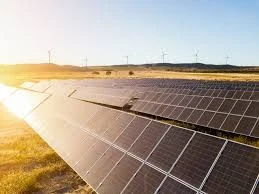Exploring the Benefits and Efficiency of Bifacial PV Modules in Renewable Energy Systems
The Rise of Bifacial PV Modules Harnessing Solar Energy More Efficiently
In recent years, the global shift towards renewable energy has led to significant advancements in solar technology. Among these innovations, bifacial photovoltaic (PV) modules have emerged as a prominent solution, offering enhanced efficiency and versatility in solar energy capture. This article explores the advantages of bifacial PV modules, their working principles, and their growing importance in the renewable energy landscape.
Understanding Bifacial PV Modules
Bifacial PV modules are designed to capture solar energy from both sides of the panel. Unlike traditional solar panels, which are typically mounted facing a single direction, bifacial panels can utilize sunlight that reflects off the ground or surrounding surfaces, thereby increasing their overall energy production. This is particularly advantageous in installations where reflective materials—such as sand, snow, or white gravel—are utilized.
The construction of bifacial modules involves a transparent back cover rather than the opaque surfaces found in standard panels. This allows for more light to enter the solar cells from behind, enhancing their efficiency. By leveraging this design, bifacial modules can achieve increased energy yields, sometimes producing up to 30% more electricity than their monofacial counterparts, depending on installation conditions.
Advantages of Bifacial PV Modules
1. Higher Energy Yield The dual-sided exposure of bifacial modules enables them to capture additional solar energy from reflected light. This characteristic can result in significantly higher energy output, enhancing the return on investment for solar farm operators.
2. Reduced Land Requirements With the ability to generate more electricity per unit area, bifacial PV systems can require less land for installation. This is especially beneficial in regions where land availability is limited or expensive.
pv module bifacial

3. Durability and Longevity Bifacial modules are often constructed with robust materials that enhance their durability. Many manufacturers offer extended warranties for bifacial panels, reflecting their confidence in the longevity and reliability of these products.
4. Versatile Applications Bifacial panels can be integrated into a variety of applications, from large-scale solar farms to rooftops and building-integrated photovoltaics (BIPV). Their flexibility allows for innovative design solutions in urban and rural settings alike.
5. Environmental Benefits By maximizing energy output with minimal additional land use, bifacial PV technology supports the sustainability goals of reducing greenhouse gas emissions and promoting clean energy sources.
Challenges and Considerations
Despite their benefits, bifacial PV modules are not without challenges. The initial cost of bifacial technology can be higher than that of conventional panels, which could deter some investors. However, the long-term energy gains often outweigh these upfront costs. Additionally, careful site assessment is essential to maximize reflective benefits; not all installations will yield significant gains without proper evaluation of ground conditions.
Moreover, the installation of bifacial panels may require specialized mounting systems that allow for optimal exposure from both sides. As expertise in this field grows, the industry is likely to see advancements in installation techniques and optimization strategies.
Conclusion
The advancement of bifacial PV modules marks a significant development in solar technology, combining innovative design with practical efficiency. As the world increasingly seeks sustainable energy solutions, the adoption of bifacial technology offers a promising path forward. With their potential for increased energy output, versatility, and durability, bifacial panels are poised to play a crucial role in the global transition to renewable energy. As research and development continue to enhance this technology, the future looks bright for bifacial PV modules in the renewable energy landscape. The integration of these panels in diverse applications presents an opportunity for both energy producers and consumers to harness solar power more effectively and sustain a greener planet.
-
String Solar Inverter: The High-Efficiency Solution for Smart Solar EnergyNewsJul.14,2025
-
Revolutionizing Rooftop Energy with the Power of the Micro Solar InverterNewsJul.14,2025
-
Power Independence with Smart Off Grid Solar Inverter SolutionsNewsJul.14,2025
-
On Grid Solar Inverter: Powering the Future with Smart Grid IntegrationNewsJul.14,2025
-
Monocrystalline Solar Panels: High-Efficiency Power for the Future of Clean EnergyNewsJul.14,2025
-
Bifacial Solar Panel: A Smarter Investment for Next-Generation Energy SystemsNewsJul.14,2025







